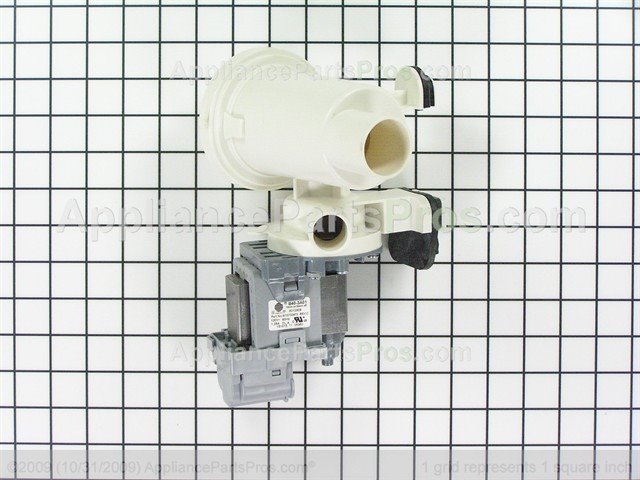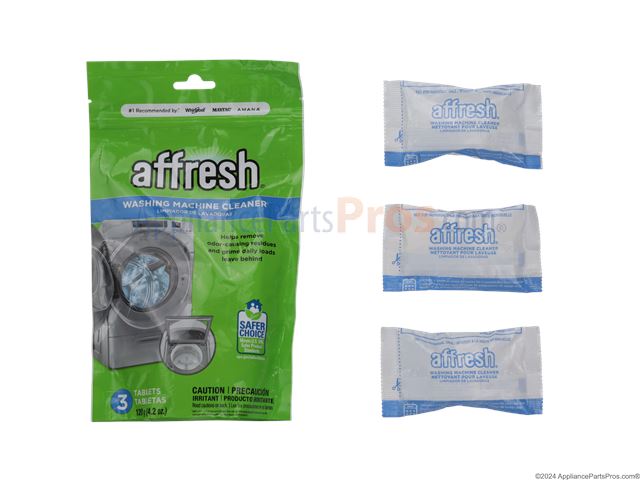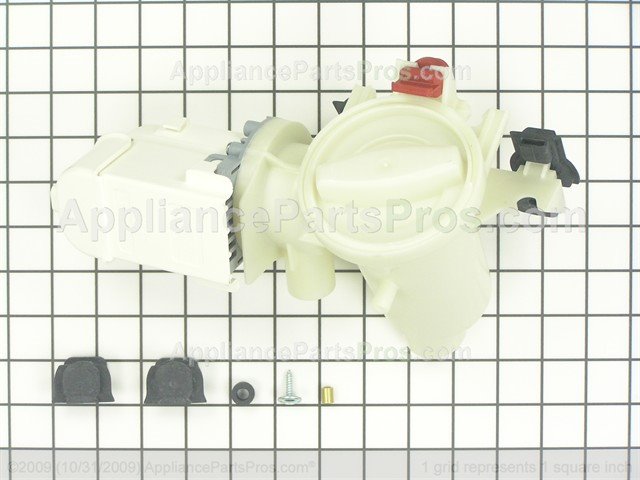Kenmore Elite 721. model gas range error codes:
These error code explanations help troubleshoot a problem on a Kenmore Elite double oven gas range with a model number that starts with 721.
When your range isn't heating, you may see an error code in the display. The control only displays F3, F9 and F19 error codes in the regular operation mode.
If you don't see a code during a range malfunction, press Clear, and then press and hold Lower Bake and Lower Broil keys for 3 seconds. If the range has a failure that generated an error code other than ones shown above, you'll see that code appear. After noting the error code, press Lower Stop to clear the display. The error code will likely point you in the direction of the range failure. Find the error code in the chart below and repair the failure.
| Code | Meaning | Possible Cause | Possible Parts |
| F1 or F2 | Defective upper oven temperature sensor | Unplug the range and measure the resistance of the upper oven temperature sensor. You should measure 1,090 ohms at room temperature (77 degrees F). If resistance is off by more than 100 ohms, replace the upper oven temperature sensor | Upper oven temperature sensor |
| F3 | Stuck key | Unplug the range and check the ribbon wire harness connection between the control panel and the oven control board. Reconnect the ribbon wire if loose or replace the wire if damaged. If the ribbon wire connection is okay, unplug the ribbon wire harness and reassemble the range. Plug the range in to restore power. If the F3 code appears after powering up the range, replace the oven control board because the board detects a stuck key with the ribbon wire unplugged. If the F3 doesn't appear, replace the control panel | Control panel, oven control board |
| F4 or F5 | Defective lower oven temperature sensor | Unplug the range and measure the resistance of the lower oven temperature sensor. You should measure 1,090 ohms at room temperature (77 degrees F). If resistance is off by more than 100 ohms, replace the lower oven temperature sensor | Lower oven temperature sensor |
| F6 | Upper oven too hot | The control senses upper oven temperature above 650 degrees F in bake or broil modes. Unplug the range. If the code appears when the oven is at room temperature, measure the resistance of the upper oven temperature sensor. You should measure 1,090 ohms at room temperature (77 degrees F). If resistance is off by more than 100 ohms, replace the upper oven temperature sensor. If the oven is overheating when the code appears, then you'll likely need to replace the oven control board because a stuck relay on the control board is causing the overheating | Upper oven temperature sensor, oven control board |
| F9 | Upper oven not heating | Check the gas supply. Turn on a surface burner to see whether the range is getting gas. If the burner isn't getting gas, open the range gas supply valve. If the surface burner gets gas (which indicates that the range gas supply is okay), then the upper oven bake igniter could be weak. See if the bake igniter glows when you start the upper oven bake mode. The upper oven igniter should heat until it's white-hot to ignite the gas from the oven burner. The igniter is wired in series with the safety gas valve. The gas valve won't open unless it detects the igniter is hot enough to light the burner gas. If the upper oven igniter glows but doesn't heat enough to open the gas valve, unplug the range and replace the igniter. If the upper oven igniter doesn't glow, unplug the range and check the wire harness connections on the upper oven bake igniter and upper oven gas valve. Reconnect any loose wires and repair any broken wires. Next, check the resistance of the bake burner igniter using a multimeter. You should measure between 45 and 400 ohms through the igniter. Replace the igniter if you measure infinite resistance. If the igniter is okay, check the resistance through the gas valve. You should measure 1 to 3 ohms of resistance through the gas valve for the upper bake burner. Replace the gas valve if you measure infinite resistance. Check the wire harness connections for the upper oven on the oven control board. Reconnect any loose wires and repair any broken wires. Unplug the CN02 and CN03 wire harness connectors from the control board and check the resistance through the yellow wire on CN02 and white wire on CN03. You should measure 45 to 400 ohms of resistance. If you measure infinite resistance, then the circuit has a broken wire. Trace the wiring from the control board through the igniter and gas valve. Repair the broken wire. If you measured 45 to 400 ohms of resistance through the wires, check the resistance of the upper oven temperature sensor. You should measure near 1,090 ohms at room temperature (77 degrees). If resistance is off by more than 100 ohms, replace the upper oven temperature sensor. If the temperature sensor resistance is okay, replace the oven control board because it isn't sending current to the igniter | Upper oven bake igniter, upper oven bake burner gas valve, wire harness, upper oven temperature sensor, oven control board |
| F10 | Upper oven door lock failure | Unplug the range and check the wire harness connections between the upper oven door lock motor and the relay control board. Reconnect any loose wires and repair any broken wires. Check the wire harness connections between the door lock switches and the oven control board. Reconnect any loose wires and repair any broken wires. Measure the resistance of the upper oven door lock motor using a multimeter. You should measure about 2,600 ohms. Replace the door lock assembly if you measure infinite resistance | Upper oven door lock |
| F16 | Lower oven too hot | The control senses lower oven temperature above 650 degrees F in bake or broil modes. Unplug the range. If the code appears when the oven is at room temperature (77 degrees F), measure the resistance of the lower oven temperature sensor. You should measure 1,090 ohms at room temperature. If resistance is off by more than 100 ohms, replace the lower oven temperature sensor. If the oven is overheating when the code appears, then you'll likely need to replace the oven control board because a stuck relay on the control board is causing the overheating | Lower oven temperature sensor, oven control board |
| F19 | Lower oven not heating | Check the gas supply. Turn on a surface burner see whether the range is getting gas. If the burner isn't getting gas, open the range gas supply valve. If the surface burner gets gas (an indication that the range gas supply is okay), then the lower oven bake igniter could be weak. See if the bake igniter glows when you start the lower oven bake mode. The lower oven igniter should heat until it's white-hot to ignite the gas from the oven burner. The igniter is wired in series with the safety gas valve. The gas valve won't open unless it detects the igniter is hot enough to light the burner gas. If the lower oven igniter glows but doesn't heat enough to open the gas valve, unplug the range and replace the igniter. If the lower oven igniter doesn't glow, unplug the range and check the wire harness connections on the lower oven bake igniter and lower oven gas valve. Reconnect any loose wires and repair any broken wires. Next, check the resistance of the bake burner igniter using a multimeter. You should measure between 45 and 400 ohms through the igniter. Replace the igniter if you measure infinite resistance. If the igniter is okay, check the resistance through the gas valve. You should measure 1 to 3 ohms of resistance through the gas valve for the lower bake burner. Replace the gas valve if you measure infinite resistance. Check the wire harness connections for the lower oven on the oven control board. Reconnect any loose wires and repair any broken wires. Unplug the CN02 and CN03 wire harness connectors from the control board and check the resistance through the yellow wire on CN02 and white wire on CN03. You should measure 45 to 400 ohms of resistance.. If you measure infinite resistance, then the circuit has a broken wire. Trace the wiring from the control board through the igniter and gas valve. Repair the broken wire. If you measured 45 to 400 ohms through the wires, check the resistance of the lower oven temperature sensor. You should measure near 1,090 ohms at room temperature (77 degrees). If resistance is off by more than 100 ohms, replace the lower oven temperature sensor. If the temperature sensor resistance is okay, replace the oven control board because it's not sending current to the igniter | Lower oven bake igniter, lower oven bake burner gas valve, wire harness, lower oven temperature sensor, oven control board |
| F20 | Lower oven door lock failure | Unplug the range and check the wire harness connections between the lower oven door lock motor and the relay control board. Reconnect any loose wires and repair any broken wires. Check the wire harness connections between the door lock switches and the oven control board. Reconnect any loose wires and repair any broken wires. Measure the resistance of the lower oven door lock motor using a multimeter. You should measure about 2,600 ohms. Replace the door lock assembly if you measure infinite resistance | Lower oven door lock |
Kenmore / Sears Range / Cooktop / Oven Parts
Kenmore Elite Range / Cooktop / Oven Parts
Kenmore Pro Range / Cooktop / Oven Parts
Related Links
- Kenmore / Sears Range / Cooktop / Oven Fuse or Sensor Parts
- Kenmore / Sears Range / Cooktop / Oven Terminal Block, Receptacle Parts
- Kenmore / Sears Range / Cooktop / Oven Burner & Related Parts










